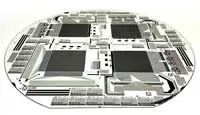 A European health consortium is developing a set of low radiation, low cost, flat panel X-ray detectors that use novel photonics technology to make diagnosis safer for patients and medical staff.
A European health consortium is developing a set of low radiation, low cost, flat panel X-ray detectors that use novel photonics technology to make diagnosis safer for patients and medical staff.
While X-ray is a useful diagnostic tool, it can be harmful to the body. Although the level of radiation can be reduced, this has come at the expense of the image resolution.
Two types of X-ray technology exist – high resolution (direct converters) or low radiation dose, (indirect converters).
Direct converters convert X-Rays directly into electrical signals, while indirect converters make use of scintillators, which emit light upon X-Ray irradiation. This light is converted into electrical signals by a photodetector.
Combining these advantages, the DiCoMo – Direct conversion hybrid-organic X-ray detectors on metal oxide backplane – project is developing a digital X-Ray detector capable of images that rival the resolution of a 16Mpixel photograph.
Current indirect detectors generate light in all directions as soon as an X-ray photon is absorbed, hitting a large number of pixels on the photodetector array and creating limited spatial resolution. Project coordinator Dr Sandro Tedde of SIEMENS HEALTHINEERS explains: “The result is like a blurred photograph. In indirect converters, there is always a compromise between resolution and sensitivity.”
DiCoMo is said to feature innovations in the frontplane – the part of the device that converts X-rays into electrical signals – and the backplane, which stores and drives the signals from the pixels to the readout circuitry and digital image reconstruction.
The new detector works by getting an indirect converter to behave in the way a direct converter is expected to perform. The DiCoMo technique sees a scintillator embedded into the photodetector, producing the high spatial resolution typically seen in direct converters.
DiCoMo’s second innovation is in the backplane technology, which has been developed by TNO and IMEC. Here, active pixels made from metal-oxide thin-film transistors amplify the charge within the backplane pixel itself. A customised readout chip developed by ICSense is said to enable high frame rates.
“Similar to CMOS camera technology, where millions of tiny photo sensors and transistors create an electrical current when exposed to light, our active pixel technology gives us a ‘louder’ signal at a much higher frame rate than ever before” says Dr Tedde.
“The fastest flat panel X-Ray detectors deliver around 60frame/s, whereas DiCoMo aims to capture 130frame/s, permitting a physician to not only examine vital organs in high resolution, but also moving images in slow motion.”
DiCoMo came up with the solution of using a hybrid X-ray absorption and conversion layer by embedding scintillating micro-particles into an organic semiconductor photo detecting bulk, in a pattern resembling the raisin parts in a raisin loaf. This prevents the light from being widely spread over several pixels since the light to electrical signal conversion occurs in the same pixel where the X-ray photon has been absorbed preserving the spatial information.
Coordinated by SIEMENS HEALTHINEERS, the project partners include BASF Switzerland, imec, TNO, ICsense and MorphwiZe.
Author
Graham Pitcher
Source: www.newelectronics.co.uk

